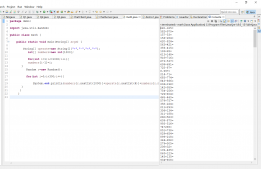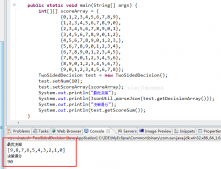利用commons.BeanUtils实现Obj和Map之间转换,这种是最简单,也是最经常用的
|
1
2
3
4
5
6
7
8
9
10
11
12
13
14
15
|
throws Exception { if (map == null) return null; Object obj = beanClass.newInstance(); org.apache.commons.beanutils.BeanUtils.populate(obj, map); return obj; } public static Map<?, ?> objectToMap(Object obj) { if (obj == null) { return null; } return new org.apache.commons.beanutils.BeanMap(obj); } |
利用java reflect完成Obj和Map之间的相互转换
|
1
2
3
4
5
6
7
8
9
10
11
12
13
14
15
16
17
18
19
20
21
22
|
public Map<String,Object> Obj2Map(Object obj) throws Exception{ Map<String,Object> map=new HashMap<String, Object>(); Field[] fields = obj.getClass().getDeclaredFields(); for(Field field:fields){ field.setAccessible(true); map.put(field.getName(), field.get(obj)); } return map;}public Object map2Obj(Map<String,Object> map,Class<?> clz) throws Exception{ Object obj = clz.newInstance(); Field[] declaredFields = obj.getClass().getDeclaredFields(); for(Field field:declaredFields){ int mod = field.getModifiers(); if(Modifier.isStatic(mod) || Modifier.isFinal(mod)){ continue; } field.setAccessible(true); field.set(obj, map.get(field.getName())); } return obj;} |
利用Introspector完成Obj和Map之间的相互转换
|
1
2
3
4
5
6
7
8
9
10
11
12
13
14
15
16
17
18
19
20
21
22
23
24
25
26
27
28
29
30
|
public Map<String,Object> obj2Map(Object obj) throws Exception{ Map<String,Object> map=new HashMap<String, Object>(); BeanInfo beanInfo = Introspector.getBeanInfo(obj.getClass()); PropertyDescriptor[] propertyDescriptors = beanInfo.getPropertyDescriptors(); for (PropertyDescriptor property : propertyDescriptors) { String key = property.getName(); if (key.compareToIgnoreCase("class") == 0) { continue; } Method getter = property.getReadMethod(); Object value = getter!=null ? getter.invoke(obj) : null; map.put(key, value); } return map; } public Object map2Obj(Map<String,Object> map,Class<?> clz) throws Exception{ if (map == null) return null; Object obj = clz.newInstance(); BeanInfo beanInfo = Introspector.getBeanInfo(obj.getClass()); PropertyDescriptor[] propertyDescriptors = beanInfo.getPropertyDescriptors(); for (PropertyDescriptor property : propertyDescriptors) { Method setter = property.getWriteMethod(); if (setter != null) { setter.invoke(obj, map.get(property.getName())); } } return obj; } |
以上就是本文的全部内容,希望对大家的学习有所帮助,也希望大家多多支持服务器之家。
原文链接:http://www.cnblogs.com/gyjx2016/p/6078210.html















